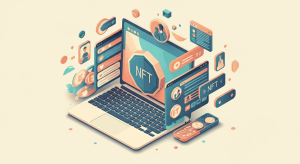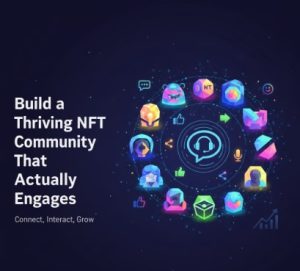How Much Security Breached in NFT Markets: A Comprehensive Analysis

The NFT ecosystem has experienced significant security challenges since its mainstream emergence. As the market expanded from approximately $82 million in 2020 to over $25 billion in 2021, it attracted not only legitimate participants but also sophisticated attackers. Understanding the true scale of these breaches provides crucial context for collectors, creators, and platforms operating in this space.
Quantifying Financial Losses

According to blockchain analytics firm Elliptic, NFT-related security breaches have resulted in over $1.2 billion in direct losses between January 2021 and March 2025. This figure encompasses marketplace exploits, phishing attacks, compromised smart contracts, and various social engineering techniques targeting the NFT community.
The largest single incident remains the Ronin Network breach in March 2022, which resulted in the theft of approximately $625 million in cryptocurrency. While not exclusively NFT-focused, this attack significantly impacted the Axie Infinity play-to-earn ecosystem and highlighted the vulnerability of blockchain bridges connecting NFT gaming environments to broader networks.
NFT marketplace security breaches have directly affected an estimated 143,000 individual wallets, with the average loss per affected user exceeding $8,300. These statistics underscore the significant financial impact these incidents have on community members.
Major Vulnerability Categories
NFT security breaches fall into several distinct categories, each exploiting different weaknesses in the ecosystem:
Smart contract vulnerabilities represent approximately 31% of total losses. These technical flaws in the underlying code governing NFTs have allowed attackers to manipulate ownership rights, conduct reentrancy attacks, or exploit logic errors in contract execution. The most devastating smart contract breaches typically affect entire collections rather than individual assets.
At NFT Marketo, we’ve analyzed how these vulnerabilities disproportionately impact newer projects without established security practices. Thorough smart contract auditing remains one of the most effective preventative measures against these exploits.
Marketplace vulnerabilities account for roughly 27% of security breach losses. These incidents typically involve flaws in centralized exchange infrastructure rather than blockchain-level weaknesses. Notable examples include the February 2022 OpenSea exploit that allowed attackers to purchase NFTs at previously listed prices despite owners’ intentions to cancel those listings.
Social engineering attacks, including phishing, comprise approximately 23% of losses. These attacks target human psychology rather than technical systems, tricking users into connecting wallets to malicious contracts or approving transactions they don’t understand. Discord server compromises have proven particularly effective, with attackers gaining control of official project channels to distribute convincing but fraudulent minting links.
Insider threats and exit scams constitute the remaining 19% of losses. These incidents involve project team members abusing their privileged access to steal funds or deliberately abandoning projects after collecting significant investment. The pseudonymous nature of many NFT projects creates fertile ground for these betrayals of community trust.
High-Profile Security Incidents
Several major security breaches have shaped the NFT market’s approach to security:
The January 2022 OpenSea exploit resulted in the theft of 254 NFTs valued at approximately $1.7 million. This incident exploited a contract migration vulnerability that briefly left certain assets accessible to unauthorized addresses. The marketplace subsequently compensated affected users, but the incident highlighted how rapidly market-leading platforms could fall victim to sophisticated attacks.
The June 2022 Bored Ape Yacht Club Instagram hack resulted in approximately $2.4 million in stolen NFTs after attackers posted a fraudulent link to a copycat website. Even this established blue-chip project proved vulnerable to relatively straightforward social engineering techniques.
The August 2023 Premint incident affected over 300 users who connected their wallets to a compromised verification tool, resulting in approximately $500,000 in stolen assets. This breach demonstrated the risk inherent in the web of third-party tools that NFT collectors frequently utilize.
The February 2024 NFT marketplace aggregator exploit saw attackers leverage cross-protocol vulnerabilities to extract approximately $3.3 million from users who had approved broad permissions across multiple platforms. This incident revealed how permission management across interconnected services creates complex attack surfaces that users struggle to monitor effectively.
The Human Cost Beyond Financial Losses

While financial metrics provide one dimension of NFT security breaches, the impact extends beyond monetary losses:
Psychological trauma affects many victims of NFT theft, particularly those who lose high-value assets representing significant portions of their overall portfolio. The combination of financial loss and emotional attachment to digital collectibles creates a particularly painful experience.
Community fragmentation often follows major security incidents, as victims and unaffected users disagree about appropriate responses and responsibility allocation. This social damage frequently exceeds the direct financial impact, particularly for projects built around strong community foundations.
Reputation damage affects both individual projects and the broader NFT ecosystem with each high-profile security breach. Mainstream adoption faces significant headwinds as potential participants observe repeated security failures across the space.
Security Improvement Trends
Despite these challenges, the NFT ecosystem has demonstrated improvement in security practices:
Smart contract auditing has become standard practice for reputable projects, with specialized firms like CertiK, Trail of Bits, and OpenZeppelin providing thorough code reviews before deployment. This preventative approach has substantially reduced certain categories of technical vulnerabilities.
Two-factor authentication implementation across major marketplaces has reduced account takeover incidents by approximately 63% since 2022. This basic security measure provides significant protection against credential-based attacks.
Wallet allowance monitoring tools help users track which contracts have permission to access their assets, addressing one of the most common attack vectors. These tools enable users to revoke unnecessary permissions that might otherwise remain indefinitely.
Security education initiatives by leading platforms and projects have improved user awareness about common threats. From phishing recognition to proper discord security practices, these educational efforts help users form protective habits.
Ongoing Vulnerability Challenges
Despite progress, several security challenges persist in the NFT ecosystem:
Cross-chain bridge vulnerabilities remain inadequately addressed, with bridges representing appealing targets due to the concentration of assets and complex security requirements spanning multiple blockchain architectures.
Social engineering techniques continue evolving faster than user education. As established attack vectors become recognized, malicious actors develop increasingly sophisticated approaches to manipulate psychology rather than technology.
Frontend injection attacks targeting marketplace websites have increased by approximately 78% since 2023. These attacks compromise the user interface layer rather than blockchain infrastructure, presenting assets or transaction details that differ from the actual on-chain operations.
Limited insurance options leave most NFT holders without financial protection against security breaches. Unlike traditional financial services with established insurance mechanisms, NFT markets offer few recovery options after successful attacks.
Protection Strategies for Collectors
Individual collectors can implement several strategies to mitigate security risks:
Hardware wallet adoption provides significant protection by keeping private keys offline and requiring physical confirmation for transactions. Despite the minor convenience trade-off, hardware wallets represent the single most effective self-custody security measure available to collectors.
Transaction simulation before signing allows users to visualize exactly what will happen when they approve a transaction. This practice helps identify malicious transactions designed to drain wallet contents rather than perform the expected operation.
Permission hygiene through regular auditing and revocation of unnecessary contract approvals reduces the attack surface available to potential exploits. Most wallet connections should be temporary rather than permanent.
Information verification through official channels before interacting with contract announcements or minting opportunities helps avoid social engineering attacks. Direct verification through project websites rather than responding to Discord or social media links adds a crucial security layer.
The Future of NFT Security
Several developing trends will shape the future security landscape for NFT markets:
Decentralized identity solutions may eventually reduce reliance on vulnerable wallet connections for verification purposes. These technologies promise more granular permission control while maintaining user privacy.
Zero-knowledge proof implementations could allow users to verify ownership or attributes without exposing sensitive wallet information to potential attackers. This technological approach addresses fundamental vulnerabilities in current authentication models.
Regulatory frameworks specifically addressing NFT security requirements are emerging in multiple jurisdictions. These regulations may impose minimum security standards on platforms and projects operating within regulated markets.
Conclusion
The scale of security breaches in NFT markets represents a significant challenge to mainstream adoption and sustainable growth. With over $1.2 billion in direct losses affecting tens of thousands of users, these incidents have impacted both market perception and participant confidence.
However, the maturing ecosystem has demonstrated increasing security sophistication, with improved technical practices, user education, and protective tools creating a more resilient environment. While perfect security remains unattainable, the risk-adjusted approach to NFT participation continues improving.
For collectors and creators navigating this complex landscape, balancing opportunity with security awareness remains essential. By implementing robust protection strategies while remaining vigilant about evolving threats, participants can significantly reduce their vulnerability while engaging with this innovative digital asset class.
For more information about protecting your NFT investments and implementing best security practices, visit NFT Marketo, where we provide comprehensive guidance on navigating the NFT ecosystem safely and effectively.





